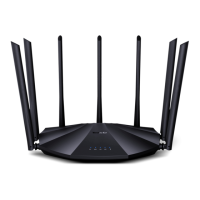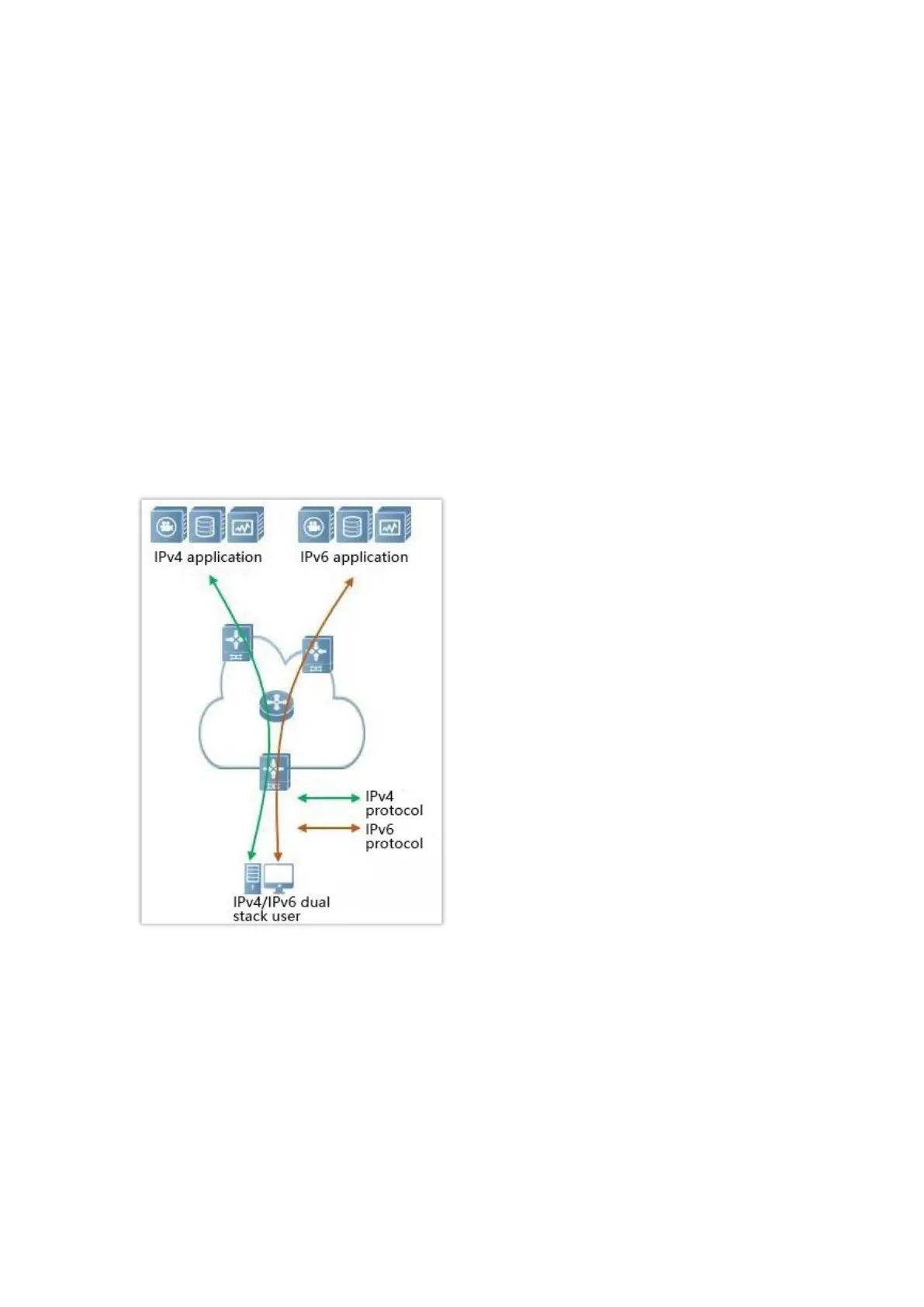101
10.1.2 IPv6 tunnel
Overview
IPv6 transition mechanism
Before the IPv6 network is widely deployed, IPv6 stations are like isolated islands. Therefore, the
dual stack and tunneling technologies are developed to achieve the communications between IPv6
islands.
◼
Dual stack technology
With the dual stack technology, nodes within the network support both IPv4 and IPv6
protocol stack. The source node selects different protocol stacks according to the different
destination nodes, and the network device selects different protocol stacks for processing
and forwarding according to the protocol type of the message. The dual-stack technology can
realize the coexistence of IPv4 and IPv6 networks, but it cannot solve the problem of
interoperability between IPv4 and IPv6 networks, nor can it solve the problem of IPv4
address exhaustion.
◼
Tunneling technology
Tunneling technology is a technology for network transmission by encapsulating one IP
protocol data packet in another IP protocol data packet, including data encapsulation,
transmission, and decapsulation. IPv6 tunnel technology encapsulates IPv6 packets as data in
IPv4 packets and communicates across IPv4 networks. With tunneling technology, you do not
need to upgrade all devices to dual stacks. You only need the border devices of IPv4 / IPv6
networks to implement dual stack and tunnel functions.

